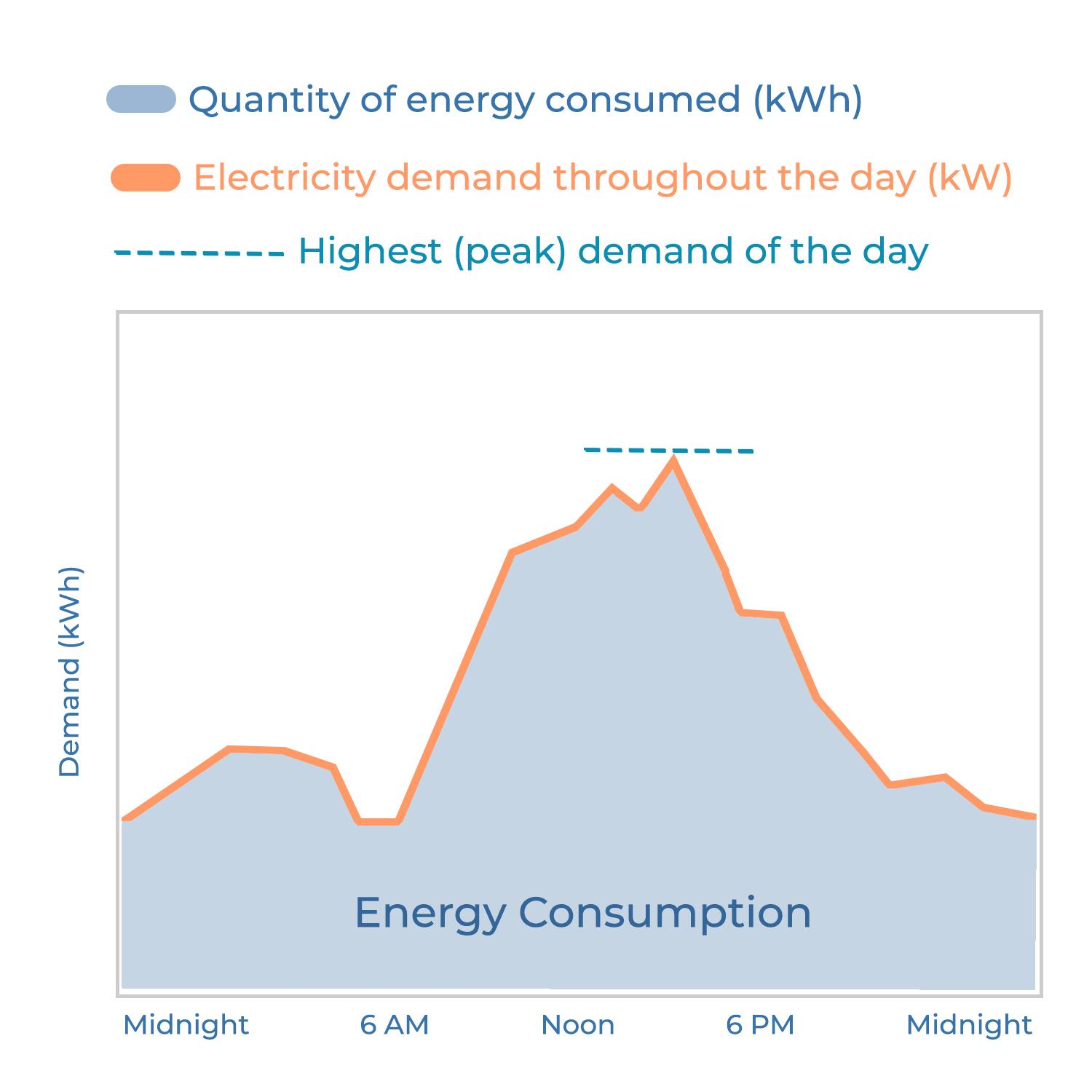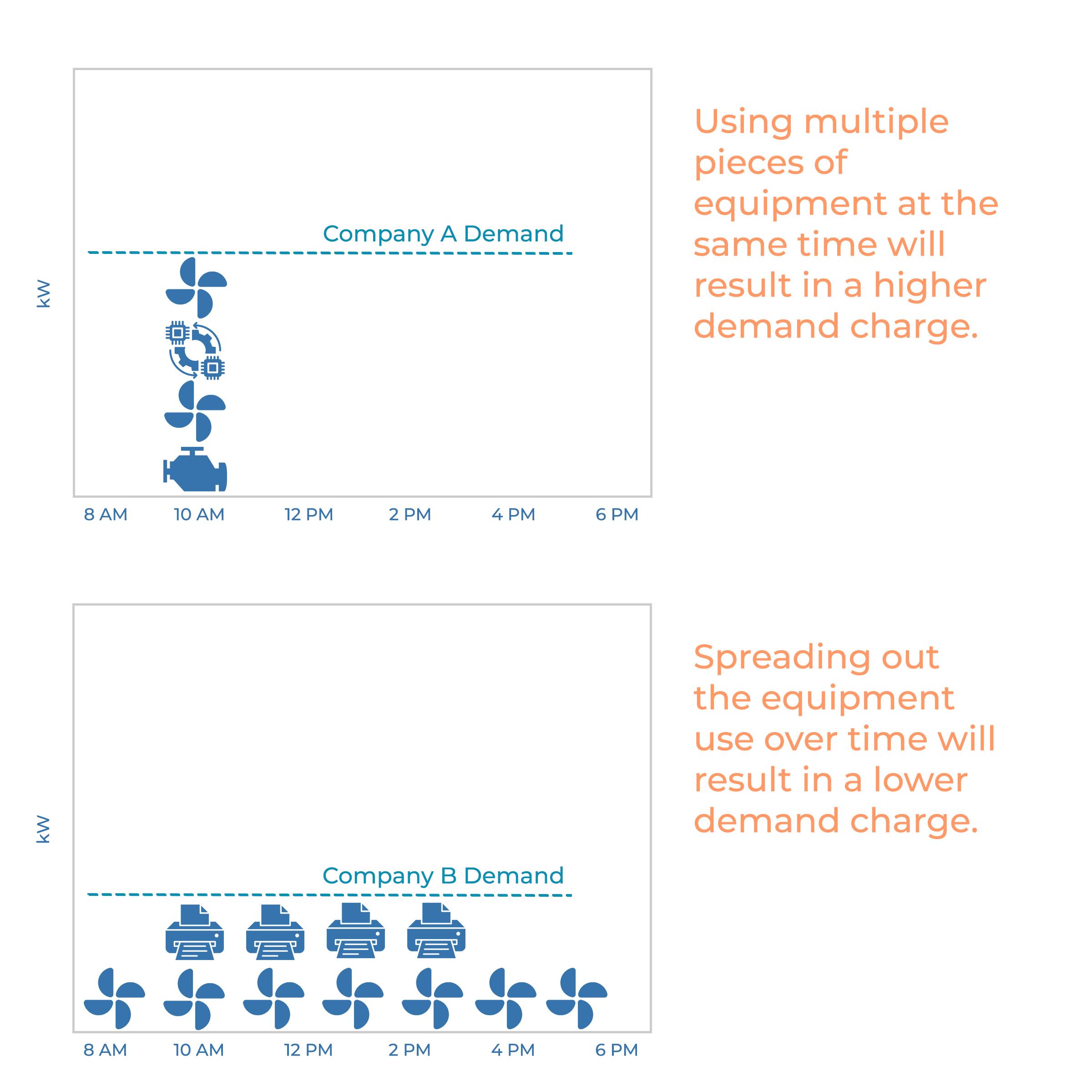Kilowatts, Kilowatt Hours, and Demand
It’s easy to get kilowatt-hours (kWh) and kilowatts (kW) mixed up when talking about energy consumption. The main difference between kilowatts and kilowatt-hours is in what they measure.
It’s easy to get kilowatt-hours (kWh) and kilowatts (kW) mixed up when talking about energy consumption. The main difference between kilowatts and kilowatt-hours is in what they measure.
A kilowatt-hour is a measure of energy. The amount of electricity your home or business uses over a period of time is measured in kilowatt-hours.
For example, if you clean your floors with a 1,000-watt vacuum cleaner for one hour, you use one kWh of energy. Different devices use different amounts of kWh when operated for the same amount of time. It all comes down to dividing 1,000 by the number of watts in an appliance.
The front of your billing statement displays your energy use in kWh for the current month, the previous month, and the same month the year before. You can reduce your electric bill by using devices that consume fewer watts or by using devices for less time.

A kilowatt is a measure of power. It is the volume of electricity that your home or business uses at a point in time. A kilowatt is one-thousand times greater than a watt (W). Watts are small, so kilowatts are a more fitting unit of measurement for whole house electricity use.
Demand (measured in kW) represents the rate at which electricity is consumed at a given point in time during a billing period. The demand kW on your electric bill is the peak amount of energy your home or business used during the billing period. At Salem Electric, the peak is an average measured over a rolling 15-minute interval.
Not all rates have a cost associated with the demand charge. Your billing statement displays your peak demand for the billing cycle even if you are in a rate class that does not charge for demand. Visit Salem Electric’s Rate Schedule for current rates.
Even if there is no demand charge for your rate schedule, being energy-smart and reducing demand can help keep rates low for everybody. During busy times of the day or extreme weather events, the power grid may be pushed to its limit because many devices are running at one time. Simple changes like using the timer to run the dishwasher or dryer at night will help ensure plenty of energy is available when we need it the most.

If you are in a rate class that charges for demand, it can have a significant impact on your bill if you don’t pay attention to how you use energy. If you use a lot of electricity over a short period of time, your demand charge will be larger (Company A). If you use electricity more consistently, your demand charge will account for a smaller portion of your bill (Company B).
Company A is an auto repair shop that is open 30 hours a week and requires 40 kW over the course of the 120-hour month. For one hour every month, they require 100kW to start up the machines in their shop. This means their monthly energy use is 4,800 kWh (40 kW x 120 hours) but their maximum demand is 100 kW. In addition to their energy charges for the 4,800 kWh, they will also pay demand charges for the 100 kW.
Company B is a printing business that is open 40 hours a week and consistently requires 20 kW over the course of a 160-hour month. Their energy use is 3,200 kWh (20kW x 160 hours). Their maximum demand is 20 kW. In addition to the energy charges for the 3,200 kWh, Company B will also pay demand charges for the 20 kW.
